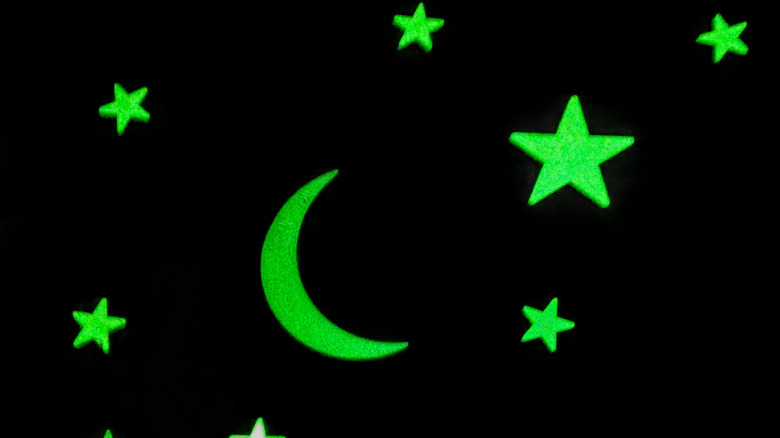How Do You Make Things Glow In The Dark?
Chances are, if you have a kid (or are a kid at heart), you have a toy that glows in the dark. Glow-in-the-dark technology has been applied to stick-on stars, branded T-shirts, yo-yos, action figures, writing supplies, sneakers — there are even novels with glow-in-the-dark covers (via Mother Jones). You probably know that these things glow brightest after they're first exposed to a bright light source. But what, exactly, is going on there?
According to Mental Floss, the magical effect is created by a type of substance called a phosphor, which lights up after being charged by another source of energy (usually in the form of light). These substances are pretty common. For instance, your teeth and fingernails have phosphors in them, which is why they glow under a blacklight, says the Chicago Section American Chemical Society. But toys that glow after exposure to a normal light need a phosphor with a particularly strong effect. Thankfully, the world's top scientists are on the case!
The dark side of glow-in-the-dark
With glow-in-the-dark toys, the phosphor mixed in with plastic is usually going to be zinc sulfide or strontium aluminate, according to HowStuffWorks. Strontium aluminate, the newer of the two substances, is especially powerful, with a glow that can last several hours.
Some items — particularly old watch or clock faces — have a consistently glowing screen that doesn't require charging. This is also created from phosphors, but with the addition of a radioactive material like radium or tritium that consistently charges the phosphor in place of a light source.
Ideally, this radioactive element is used in such small amounts that it isn't dangerous for the person wearing or making the glowing item. This hasn't always been the case, however. In the early 20th century, many workers in clock factories making radium dials eventually became stricken with radiation poisoning, according to Britannica. The resulting scandal eventually led to the creation of the U.S. Occupational Safety and Health Administration.

